480 Canine Art
PICTURING THE DOG
by David Hancock
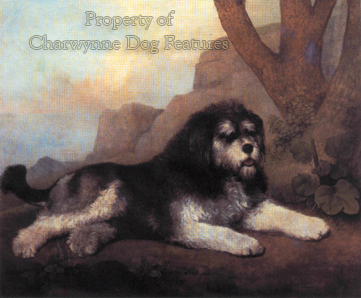 Art historians are by their very nature people with a highly developed eye for detail, with access to sound research facilities and normally featuring a commendable desire to achieve accuracy in their written work. But as far as descriptive accuracy on dogs portrayed in art is concerned, this eye for detail has a very definite blind spot. Time and time again, in art gallery catalogues, historic house guide books, fine art auctioneers' brochures and museum captions, all sorts of elementary mistakes are made in identifying dogs, especially specific breeds, in paintings, on pieces of sculpture and other works of art.
Art historians are by their very nature people with a highly developed eye for detail, with access to sound research facilities and normally featuring a commendable desire to achieve accuracy in their written work. But as far as descriptive accuracy on dogs portrayed in art is concerned, this eye for detail has a very definite blind spot. Time and time again, in art gallery catalogues, historic house guide books, fine art auctioneers' brochures and museum captions, all sorts of elementary mistakes are made in identifying dogs, especially specific breeds, in paintings, on pieces of sculpture and other works of art.
The two most common errors are easily identified. First there is superficial uncorroborated research, mainly relying on dog books by Victorian writers who copied each other's mistakes and knew little of foreign breeds. Prolific writers like 'Stonehenge', 'Idstone', Youatt, Stables, Rawdon Lee and Drury, whose books contain quite elementary errors, seem to be used as authorities again and again. Reliable writers like Ash, Leighton and Watson are sadly overlooked. This results in the words of quite distinguished art historians misleading the public rather too often over many canine studies in works of art.
Secondly there is the tendency to identify dogs portrayed in ancient art as contemporary breeds of dog, breeds which were only created or stabilised in the last hundred years or so. This tendency is assisted by overzealous breed historians who out of a desire to bring ancient lineage to their breed, can see look-alikes in every art gallery in the world. Of course dogs like today's greyhounds, deerhounds, springer spaniels, bloodhounds, basset hounds and mastiffs have existed for many centuries but more as breed types than precisely like contemporary pedigree breeds. Lesser known breeds from overseas portrayed in art in Britain are quite often given the name of the nearest British breed of dog in appearance.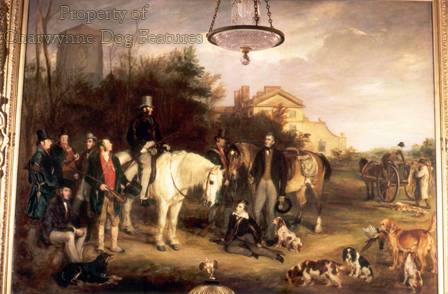
In this way Dutch paintings depicting the Koikkerhondje, (the decoy dog of Holland and a most valuable animal before the advent of firearms), almost always end up in British descriptions with their being referred to as Toy spaniels or even Cavalier King Charles spaniels. Dutch sporting dogs, like the Drensche Patrijshond, portrayed in Dutch paintings are nearly always described as English Setters by British art 'experts'. This is not just misleading but insulting. The Epagneul depicted in Bonnefond's 'The Itinerant Poulterer' of 1818 is forever described by British art 'experts' as a springer. This is disrespectful as well as ignorant.
The charming little white dog in Stubbs's 'Dog and Butterfly' is usually described as a Pomeranian; but the painting displays most accurately the Italian toy breed, the Volpino Italiano or Florentine Spitz, which has a longer back and less closely carried tail. The Volpino Italiano or Cane de Quirinale is an ancient breed, long prized by the Italian nobility and often given by them to notable visitors as prestige gifts. Little known outside Italy, except when owned by aristocrats, and often owned only by them, it sometimes featured in portrayals of families, rather as the more substantial pre-Victorian Pomeranian did in Gainsborough's work. 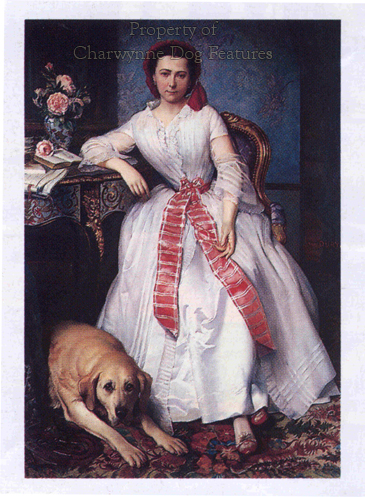
Similarly, Stubbs's 'A Rough Dog', never properly identified, looks to me remarkably like a close-clipped Great Rough Water Dog, much like the Barbet and later, the standard Poodle. Because the large water dog did not survive as a breed, it is rarely acknowledged in captions to the paintings in which it featured. The leading dog in Stubbs's 'Gamekeeper with Three Dogs' has been called a Basset and a Bloodhound; but it more closely resembles the old southern hound type of Harrier, which displayed the longer leathers and stockier stature of this type, which Stubbs very accurately captured.
But genetic impossibilities also feature in the art historian's canine identifications. At Dunham Massey, a National Trust property in Cheshire, there is a painting by Knyff of a compact short-faced brindle dog which is described in the official guide book as a Pug. But a genuine Pug cannot be brindle. Chestnut brindle Pugs have been recorded in China, where the breed originated, but not in England. Pug/Bulldog crosses (used to shorten the face of the Bulldog) have been recorded however and brindle does feature in the Bulldog coat colours. The dog depicted at Dunham Massey is much more 'of Bulldog type' and should never be described as a Pug.
In the Louvre there is an early 19th century Decamps painting usually lazily entitled 'Bulldog and Scotch terrier'; but the terrier depicted is a Bull Terrier, possibly from Scotland but certainly not Le Scottish Terrier, as the French entitle the Scottie. Also in the Louvre is a fine Desportes painting entitled 'Pack of Hounds of Louis XIV'; I would say that the dogs in this painting are French pointers and, as usual with Desportes, represent a most accurate portrayal of such dogs at that time in France, which in itself is of value.
Most of the time, in identifying dogs in paintings it is the lack of knowledge of art historians or gallery caption writers which leads to such mis-namings. In this way the dog in Sir Joshua Reynolds's 'Nelly O'Brien' and Memling's 'Vanity' is described as a Maltese, whereas it is much more likely to have been a bichon, rather like the Bolognese. The portrayal of the old Dutch breed the Steenbrak in Jan Gossaert's 'The Adoration of the Kings' has led to all sorts of art expert identification, ranging from small setter and large spaniel to hound-marked mongrel. A leading London fine art auctioneer in a recently-issued catalogue described a dog in an 18th century foreign painting as a Whippet, a breed developed in England by north country miners and then only at the end of the nineteenth century.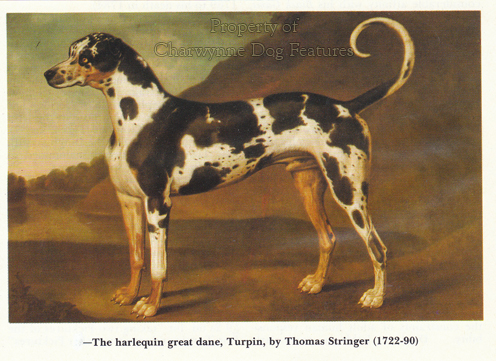
Paintings can provide us with a great deal of information about the development of the domestic dog breeds. Sir Francis Grant's 'A Shooting Party at Ranton', painted in 1840, depicts a very early Golden Retriever. Anton Dury's 'Portrait of Josephine Bowes' of 1850, depicts an early Yellow Labrador. The depiction of the harlequin Great Dane 'Turpin' by Thomas Stringer (1722-1790) shows that the breed was already favoured in England in the mid-18th century. The portrayal of an 18th century Pekingese in Hogarth's 'Shortly after the Marriage' shows a much less heavily-coated dog. Breed histories don't start with show histories; early depictions of emergent breeds have value in establishing breed-type. The captioning of paintings in catalogues is all too often unhelpful and misleading; it is perhaps an under-rated art in itself.
Art is a record of history and the interpretation of art has historical importance. As Guy Paget wrote in his 'Sporting Pictures of England' (1945): "Those who wish to understand England and its growth during the seventeenth and eighteenth centuries cannot do better than study the sporting pictures of that period". But if these pictures are inaccurately described by art experts then scholars and researchers are misled. The correct identification of a breed of dog in a work of art so often provides much wider information too: location, sporting interests, period of time and even social level.
In his 'British Sporting Paintings (1650-1850)', Oliver Millar wrote: "If we are prepared to devote study to a collection of family portraits in the hall of a country house...we cannot logically ignore the record the same patron may have commissioned of the animals in his stable and their breeding." We cannot logically ignore either, the need for accuracy in describing animals in paintings, whether in the stable or the kennel. Art historians really do need to know the difference between a bullenbeisser, a Broholmer and a braque du Bourbonnais, and if they do not, they should at least have the humility to say so.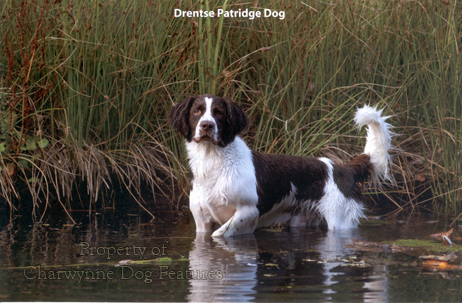
William Secord has provided us with three quite magnificent tomes on the dog in art: Dog Painting 1840-1940, Dog Painting - The European Breeds and A Breed Apart. These are superbly illustrated books and offer a wonderfully informative collection of depictions of dogs across a wide field. I am extremely grateful to him for these books and the fund of research material he has provided in this way. I do hope he continues, perhaps covering primitive art and naive art. But the text and the captions to many of the sumptuously reproduced paintings do not do justice to them.
Dealing with just the first named of his trilogy, I have a number of disappointments to air. In his caption to Chalon's Ready to Play, a fine portrayal of a water dog, he describes the subject as 'more than likely an early Maltese'. In the caption to Metsu's The Sleeping Sportsman, he describes the dog portrayed as 'undoubtedly an ancestor of our present day sporting spaniel, bearing a strong resemblance to the English Springer Spaniel'. Metsu was an early 17th century artist, working in Amsterdam. Dutch sporting dogs, especially the setters or epagneuls, were extremely well known there and then; the dog in this painting looks exactly like one of them. He seems unaware that hounds were once branded to identify them, describing this as 'shaving' the hounds. He describes the long-muzzled small sporting spaniel in Herring's Doctor Fop as a brilliant portrait of a King Charles Spaniel.
Does it matter? I believe it does if breed historians are not to be misled by such an imposing book. But Secord goes on to use Dr Caius as an authority on dogs, whereas he was a scholar whose first submission on dogs to Gesner was refused because it was too inaccurate. He also describes the terrier's function as being 'to dig out foxes', which is hardly accurate. He suggests that the shorter legs of some hounds were to enable them to scent better, being closer to the ground. This overlooks the leg-length of most scenthounds and fails to mention the difference between hunting on foot and mounted, i.e. the pace needed by the hounds with longer legs. He is writing beyond his knowledge.
He describes the Welsh Springers in a Holt painting as Irish Red and White Setters, states that the solid red Irish Setter first appeared in 1810, claims that Rawdon Lee, a prolific writer on terriers, was a Terrier expert and that the Rev John Russell preferred a working terrier with shorter legs, which is untrue. These are not trivial matters only of interest to the punctilious. Russell favoured a 14 inch terrier not the 'dachshund type'. But when readers are presented by statements in an expensive impressive-looking weighty book about dogs, they can be forgiven for believing what they read. I am an admirer of these three books and glad to have them; but they should have been supported by a better-researched text by a more knowledgeable writer.
Gallery curators, art historians and catalogue compilers play an important role in presenting art, in all its glorious forms, to the general public. Their over-casual approach to captioning paintings on dogs unsettles me. If they are misinforming me in this context, what else are they misinforming me on? In my working life I was, at various times, responsible for four different museums and an art gallery. My colleagues and I took infinite pains to present accurate displays for the paying public, not just out of professional pride but out of a profound respect for our paying visitors. Knowledge needs to be balanced, in equal measure, with humility.
Writers of books on breeds of dog can be forgiven for repeating the faulty statements of previous breed historians and for believing art experts who supply false information. But in the absence nowadays of editorial correction at far too many publishers the honest truth is becoming increasingly difficult to find. Long-established sporting magazines once had 'kennel editors' who knew their stuff and ensured some degree of accuracy. But it wrong to target art historians for their lack of knowledge. Two museum professionals produced a book on the collection of preserved dogs at the Natural History Museum and stated in it that the Jack Russell Terrier came from a cross between the Fox Terrier and the Sealyham Terrier - when as 'any ful nowes' the Sealyham came later. Accuracy does matter.